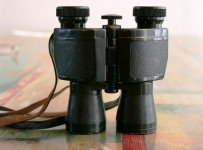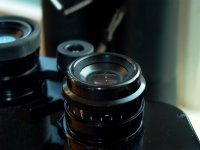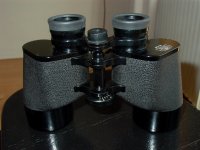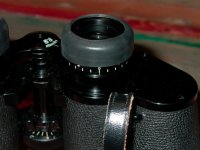I believe that Bushnell made a really big one that many people, like me, mistook for a Roof Prism. It was an 8 x 50 or so, if I recall correctly. Some one should come up with it, bye and bye, I'm sure.
Bob
Though that's not really a reverse porro but an over/under porro.
See the Funky Bin thread for links and photos of those! I've still not seen one of these second hand.
http://www.birdforum.net/showthread.php?t=140154
In fact you can characterize porros by the angle the L-shaped porro cluster makes to the vertical or horizontal. An over/under porro has the L is tilted at 45 degrees straight (with the point of the L at the outside of the bins). See the picture of the Rollei or L11A1 British Army bins to see this. You can rotate the porro cluster one way or the other that you can make "reverse porros" or "normal" (forward?) porros.
So I guess the case for the biggest "reverse porros" is just before they become "over/under" porros.
The biggest you can make an over/under porro is when
IPD = 2*(objective radius + housing thickness)
or
objective radius = IPD/2 - housing thickness
or for a rough approximation (which I could just have stated)
objective diameter ~ minimum IPD
The minimum IPD is usually 55mm. So 50mm for an over/under porro is perhaps a reasonable maximum.
I leave the case for the true reverse porro which just needs a bit of trig and the cluster angle to be included. But it will always be smaller than this.
And as you become more and more reverse the "offset" (the length of the side of the L) of the porro cluster becomes more important.
The other issue as you get to larger reverse porro objectives is you need bigger prisms (to deal with a bigger light cone) so you might have a problem with those mechanically interfering with each other.
I suspect this is why you don't see reverse porros larger than 30mm to meet all of these requirements.









